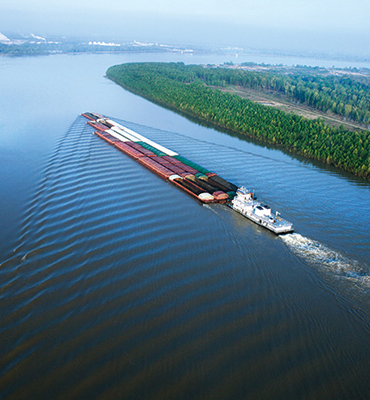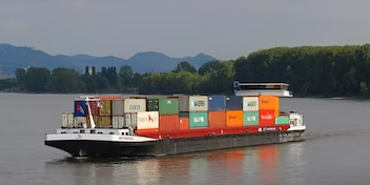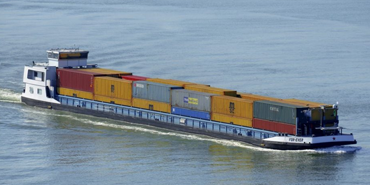Inland Freight Water Transport
Inland freight water transport, also known as inland waterway transportation, refers to the movement of goods and commodities through navigable rivers, canals, lakes, and other inland water bodies. This mode of transportation is primarily used within a country or between neighboring countries, connecting inland regions to coastal ports or other waterway networks. It is an essential part of the overall transportation system and plays a vital role in moving bulk cargo and heavy goods efficiently.
Key aspects of inland freight water transport include:
-
Types of Vessels:
Inland waterway transport utilizes specialized vessels designed to navigate rivers and canals. These vessels vary in size and type, ranging from barges and push boats for bulk cargo to passenger boats for tourism and transportation.
-
Bulk Cargo Transport:
Inland water transport is well-suited for the movement of bulk commodities, such as coal, grains, ore, petroleum products, and construction materials. It can efficiently carry large volumes of goods at relatively low costs.
-
Environmental Benefits:
Compared to other modes of transport, inland freight water transport generally has a lower carbon footprint. It is considered a more environmentally friendly option, as water vessels consume less fuel per ton of cargo transported compared to trucks or airplanes.
-
Connectivity:
Inland water transport provides connectivity to areas that might not be easily accessible by other transportation modes. It can connect remote regions and landlocked countries to major ports and international trade routes.
-
Infrastructure Requirements :
To support inland water transport, waterways need to be maintained and improved to ensure navigability. This may involve dredging, lock systems, and other infrastructure development.
-
Intermodal Transportation:
In many cases, inland freight water transport is part of an intermodal transportation network, which combines different modes of transport to move goods efficiently. For example, goods transported via inland waterways can be further transported by trucks or trains for final delivery.
-
Challenges:
Inland water transport is subject to challenges such as seasonal variations in water levels, weather conditions, infrastructure maintenance, and competition with other transportation modes.
-
Cost-Effectiveness:
Inland water transport can offer cost advantages for bulk cargo transportation over long distances when compared to road or rail transport.
-
Safety and Regulations:
Inland waterway transportation is subject to regulations and safety standards to ensure the safe movement of goods and passengers.
Inland freight water transport is an important component of a country's transportation infrastructure, contributing to economic development, trade, and regional connectivity. It complements other transportation modes, providing a balanced and sustainable approach to freight movement. Efforts are being made in various regions to optimize and modernize inland waterway systems to enhance their efficiency and capacity.


